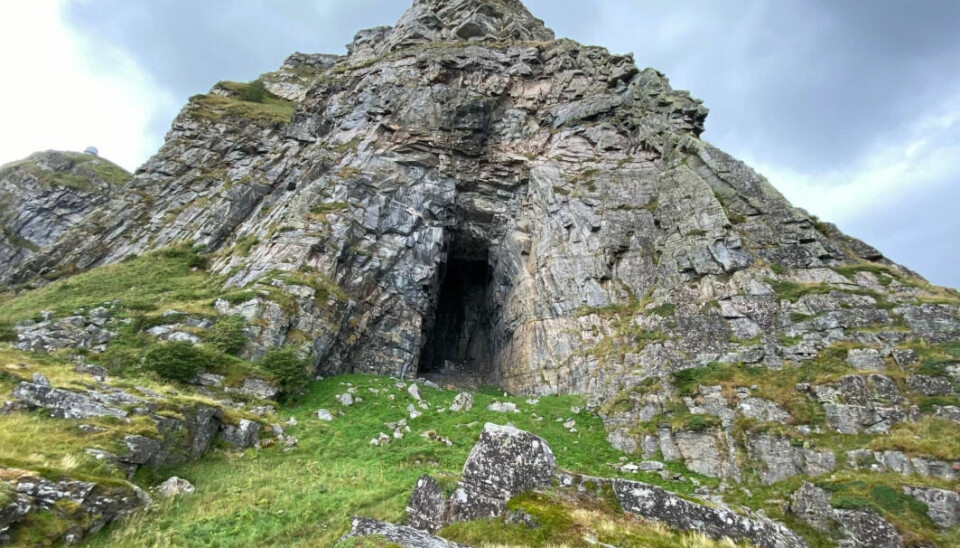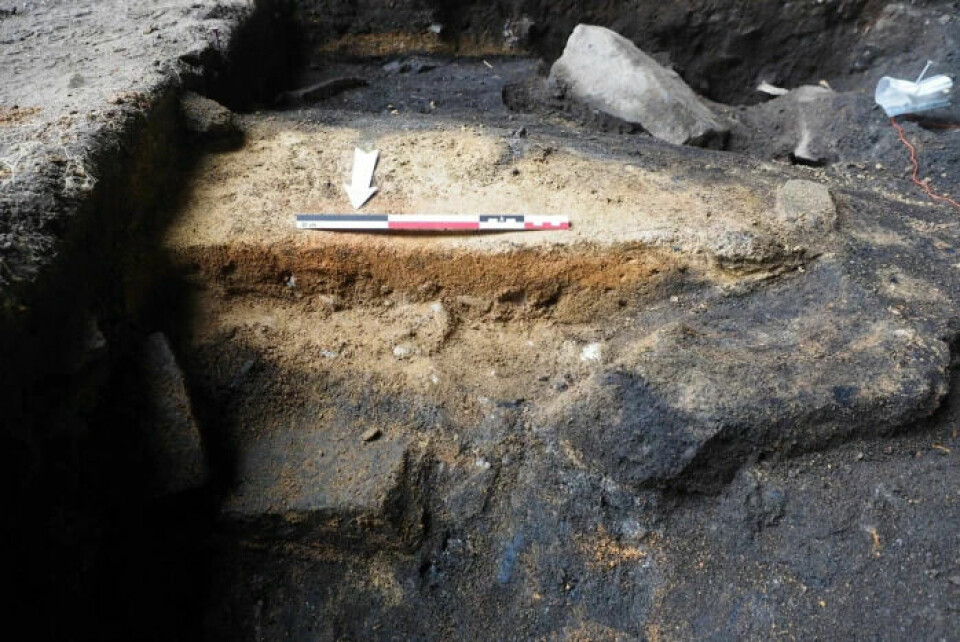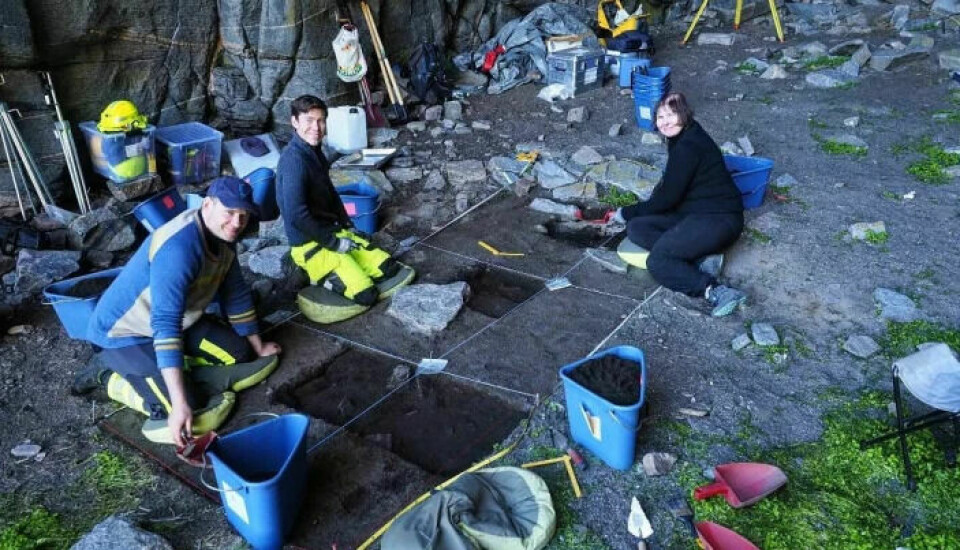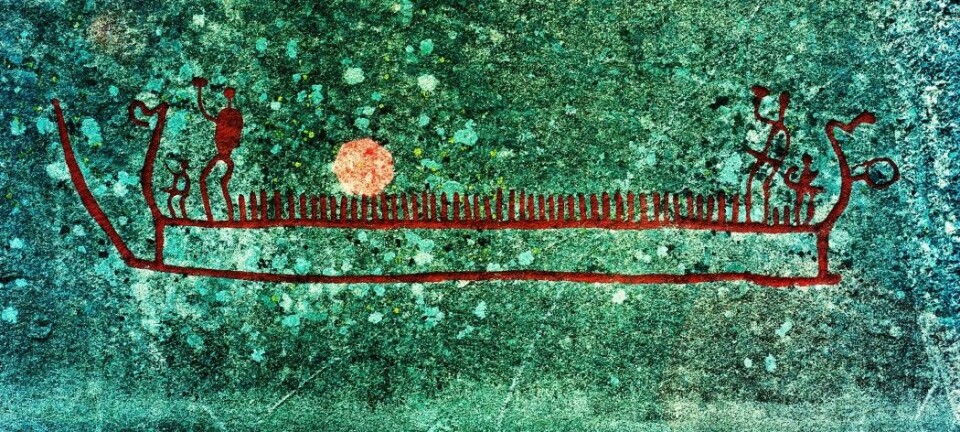
Why did somebody build a ceramics factory on this remote island 2000 years ago?
It's far off the Norwegian coast, and there isn't clay available to make ceramics. Still, somebody made a lot of pottery at Kirkhelleren in Træna, thousands of years ago.
Only once before has a similar place used to produce ceramics several thousand years ago been found in Norway. It was located outside Kristiansand in Southern Norway. Archaeologists are also aware of a few other possible such installations.
Why, perhaps as long as 2,000 years ago, did somebody build what could almost be described as a ceramics factory in Kirkhelleren in Træna - far out in the sea off the Helgeland coast? The archaeologists do not yet have a clear answer.
Træna is located 50 kilometers from the mainland in Northern Norway.
The Islands have a population of just under 500 people, and is otherwise known among other things for hosting the Træna festival.
It is also one of Norway's first settlements, and apparently a place where you could get good pottery, a couple of thousand years ago.
Extensive ceramic production
“We have found a structure that has clearly been affected by heat. It is insulated at the bottom and is lined with limpet shells. There is a lot of burnt clay inside,” archaeologist Erlend Jørgensen says. “We believe that this structure must have been made for a fairly extensive production of ceramics.”
He asserts that this is not like a ceramic kiln we might find today.
It is unlikely there is clay suitable for making ceramics in Træna. People may have had to transport clay from the mainland and far out to sea.
The archaeologist at the Norwegian Institute for Cultural Heritage Research emphasises that the dating of around 2,000 years remains uncertain.
Found lots of pottery 90 years ago
The last time there was a major archaeological excavation in Kirkhelleren on Træna was in the 1930s. At that time, archaeologist Gutorm Gjessing and colleagues excavated the inner part of the cave.
There they found large quantities of pottery remains.
Archaeologists have now begun excavating other parts of the cave. Their new finding ties in with Gjessing’s pottery remains found almost 90 years ago.
“Ceramic production is still not something you start on a large scale in a place like this unless there is a very special reason for it,” Jørgensen tells sciencenorway.no. “This is why I think it is very strange.”

Is it for storing seals?
When encouraged to speculate a bit, the archaeologist points to the capture of seals and fish that certainly took place on Træna around 2,000 years ago.
“Inside Kirkhelleren we have found huge amounts of bones and other slaughter waste. These are mostly remains of seals and fish. There has likely been large-scale seal hunting here on Træna,” he points out. “Whole animals appear to have been taken into the cave and cooked in special cooking pits along with shells, birds and fish.”
Archaeologists have also found many remains of large cod and some sheep within the layers inside Kirkhelleren. They have also found remains of a moose.
“If I were to speculate, it appears that this ceramic production may have related to the mass capture of seals and other animals. Perhaps the pottery was created for food preparation. However, we do not know for sure,” Jørgensen says.

People here 9,000 years ago
Kirkhelleren is a popular tourist destination on the Helgeland coast and the excavation that is now taking place is adapted for the public. Last summer, at its busiest, a couple of hundred people visited the cave a day and observed the archaeologists' work.
Queen Sonja was one of the visitors.
During the excavation work last year, the researchers came across bones and charcoal that turned out to be about 9,000 years old. That is, from the Old Stone Age in Norway.
Jørgensen does not rule out that they may be able to find even older remains of people out on Træna.
———
Translated by Alette Bjordal Gjellesvik.

































